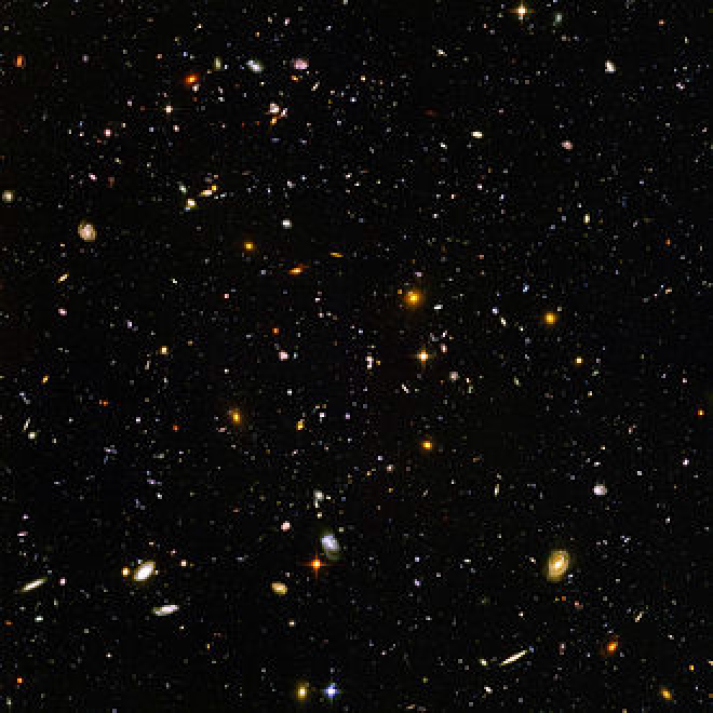
Original NASA release
Here in Tucker County, we can see dark nights, clear skies, and a multitude to stars in the sky. In our county, our clear skies provide a night time vista of the stars that is becoming more and more rare throughout the United States. The next time you look at a clear and starry night sky, you may wish to ask yourself the following question:
If the Universe is infinite and if there is an infinite number of stars in the sky, then why is the sky dark at night?
The question is known as Olbers’ paradox. Although the question can be traced as far back as Kepler in 1610, and was further discussed by Halley and Cheseaux in the eighteen century; it was not popularized until the German astronomer, Heinrich Wilhelm Olbers took up the issue in the nineteenth century.
The paradox was popularized at a time when observational skies were clearer and when background light levels were much lower. At that time, people who looked into the night skies could see many more stars than the typical urbanite dweller sees today.
Today, the concept of Oblers’ paradox is unknown to the majority of the world’s population. With people living in the cities that contain the high levels of background light, the concept of a multitude (possibly an infinite number) of stars does not enter in many people’s reality.
However, in places like Tucker County, where clear nights can occur, where background light levels are low and where observers can look to the heavens to see a great many stars, the sense of wonderment and the concept of Obler’s paradox remains viable.
Oblers’ paradox centers on the argument that the darkness of the night sky conflicts with the assumption of an infinite and eternal universe. If universe is homogeneous and populated by an infinite number of stars, then any line of sight from Earth must end at the (very bright) surface of a star. Henceforth, the night sky should be illuminated.
Obviously, an illuminated night sky is not an observational reality. Therefore, there must be a reason to explain the difference between our observations and the concept of an infinite universe.
What are the reasons why a dark sky exists? Possibly, the solution belongs to one of the three following explanations:
- Perhaps the universe is finite and that it just ends at some point.
- Perhaps the universe just runs out of stars after suitably large distances.
- Maybe there hasn’t been enough time for the light to reach us from the most distant stars.
Curiously enough, one of the first published solutions to Olbers’ Paradox is attributed to Edgar Allan Poe. In his essay titled Eureka, Poe says that the stars are out there but their light has not yet had enough time to reach us.
The modern resolution to Olber’s paradox comes through a combination of both physical theories and observational techniques that did not exist when Heinrich Wilhelm Olbers posted his question. We now believe that the universe is not Newtonian and static. Instead, we believe that the universe is relativistic and expanding. With this expansion, the light from distant objects in the universe is red-shifted by an amount related that objects distance from us. As a result, we can only see with visible light a finite distance into the universe. Stars (or galaxies) may exist in the universe beyond this visible horizon (or Hubble horizon). Unfortunately, light emitted from these objects has been red-shifted out of our visible spectrum. The visible light from these objects has not yet made it to us. Furthermore, the light from these objects will never reach us.
Edgar Allen Poe was then at least partially correct. He did come up with an explanation as to why the sky is dark at night.
The next time that you enjoy your view into the infinite and the dark skies that surround Tucker County, perhaps you may get to think about Heinrich Wilhelm Olbers, Edgar Allen Poe, Issac Newton, Albert Einstein, and the wonderment of being able to look into an infinite universe.



